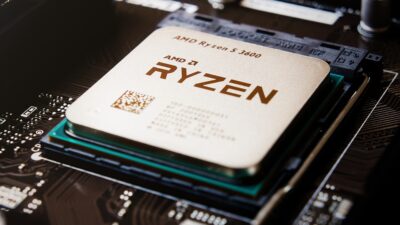As we step into 2024, the rivalry between Intel and AMD continues to intensify, marking one of the most competitive eras in computer processing history. With each company bringing cutting-edge technology and innovative designs to the market, the question of supremacy has become more significant than ever for consumers, gamers, and professionals alike.
A Brief Historical Context
The competition between Intel and AMD is not new. For decades, Intel has been the dominant player in the CPU market, renowned for its high-performance processors and significant market share. However, AMD has steadily gained ground since the launch of its Ryzen series in 2017, which offered competitive performance at more affordable prices. By 2024, both companies have developed powerful architectures that push the envelope of what CPUs can achieve.
2024 Processor Lineups
Intel: The 14th Generation Core Series
Intel’s latest 14th-generation Core processors have taken significant strides in performance, particularly in multi-threaded applications. Innovations such as increased core counts, advanced power efficiency, and improved PCIe 5.0 support have made these CPUs suitable for high-end gaming and intensive workstation tasks.
One of the highlights of Intel’s 2024 offerings is the integration of AI capabilities into their processors, which facilitates enhanced performance in applications ranging from video editing to gaming. The new LGA 1851 socket allows for better thermal management and overclocking potential, attracting enthusiasts looking to maximize performance.
AMD: The Ryzen 8000 Series
AMD has countered Intel’s advancements with its Ryzen 8000 series, built on the Zen 5 architecture. This series emphasizes a balance of high performance and value, continuing AMD’s tradition of offering more cores and threads at competitive prices.
Key features include support for DDR5 memory and PCIe 5.0, which are critical for future-proofing systems. AMD’s commitment to efficient power consumption also resonates with environmentally conscious consumers, appealing to a growing market segment interested in sustainable computing solutions.
Performance Metrics: Gaming vs. Productivity
Performance assessments reveal distinct advantages depending on user needs:
Gaming: A Closer Look
In gaming scenarios, Intel’s processors often excel in single-threaded performance, translating to higher frame rates and better responsiveness in many popular titles. However, AMD’s Ryzen CPUs have narrowed the gap significantly, providing excellent multi-threaded performance that benefits open-world and highly demanding games. 2024 benchmarks consistently show AMD chips competing closely with Intel’s offerings, making the decision largely dependent on specific game optimization and resolution settings.
Productivity and Content Creation
For professionals involved in content creation, both companies offer valuable tools. Intel’s multi-core enhancements shine in video rendering and 3D modeling applications, while AMD’s higher core counts appeal to those using heavily threaded software. Notably, tests in Adobe Creative Suite, Autodesk, and similar applications show that Ryzen processors can match or exceed Intel in rendering times, thanks to their architecture and efficient threading.
Pricing Strategies and Consumer Value
Historically, AMD has positioned itself as a more budget-friendly option, offering competitive performance at lower price points. In 2024, this strategy remains intact, as AMD continues to deliver excellent value across its product range. Intel, while maintaining its premium offerings, has also started to adjust prices to better compete with AMD, recognizing the importance of value in the current market landscape.
Conclusion: The Future of CPU Turf Wars
As we look ahead, the rivalry between Intel and AMD is far from over. With both companies investing in research and development to create even more powerful and efficient processors, the future promises exciting innovations.
For consumers, the choices are clearer than ever: whether you’re a gamer, content creator, or casual user, both Intel and AMD offer processors that are equipped to handle the demands of modern computing. Ultimately, the battle for supremacy will depend not only on benchmark scores but also on how well each company adapts to the evolving landscape of technology, including the growing importance of AI, integrated graphics, and power efficiency.
As the dust settles on 2024, it’s clear that the competition between Intel and AMD will continue to shape the future of computing, pushing both companies to new heights and delivering myriad benefits to end users. Whether you’re Team Blue or Team Red, one thing is certain—this battle is far from finished.



